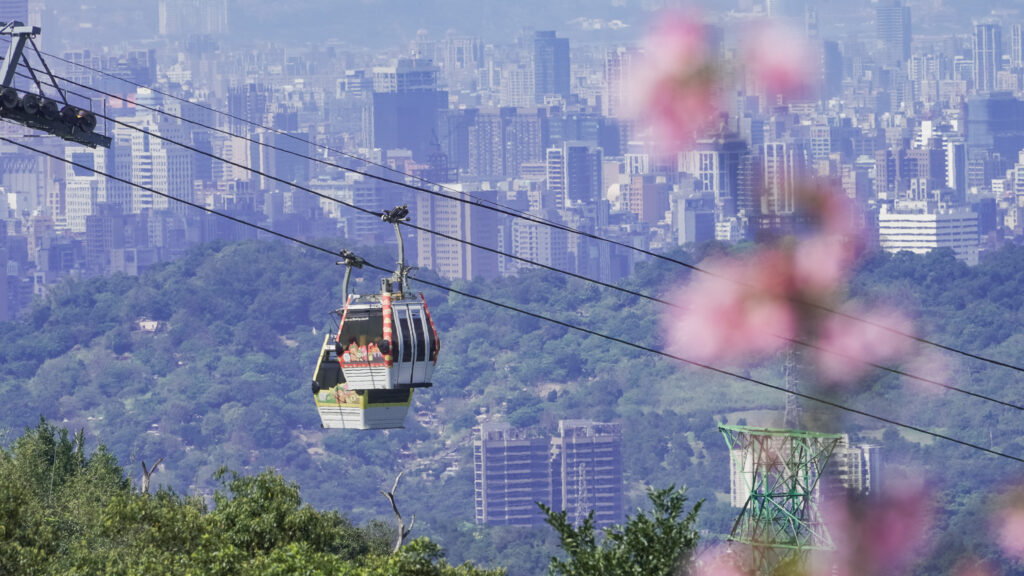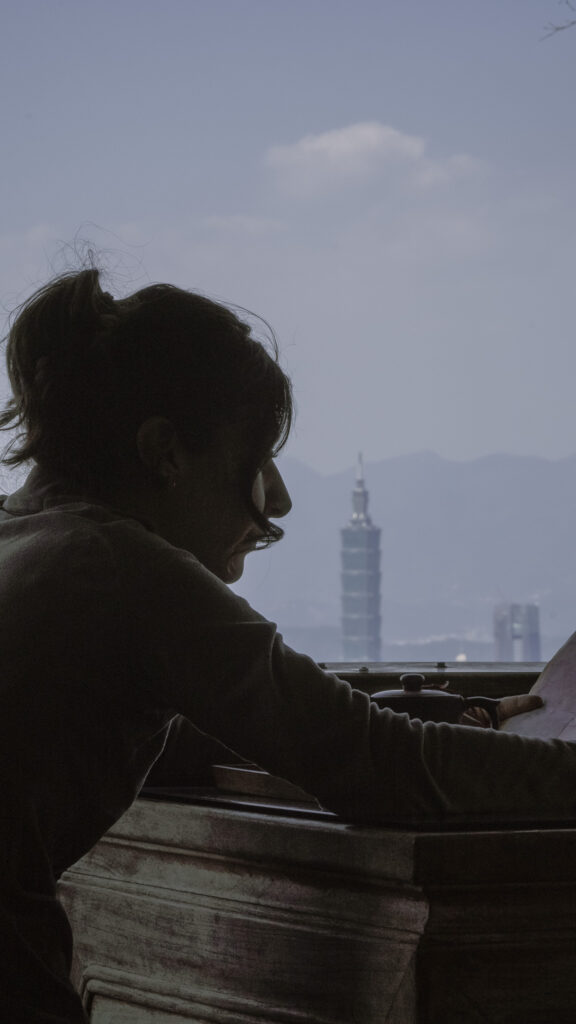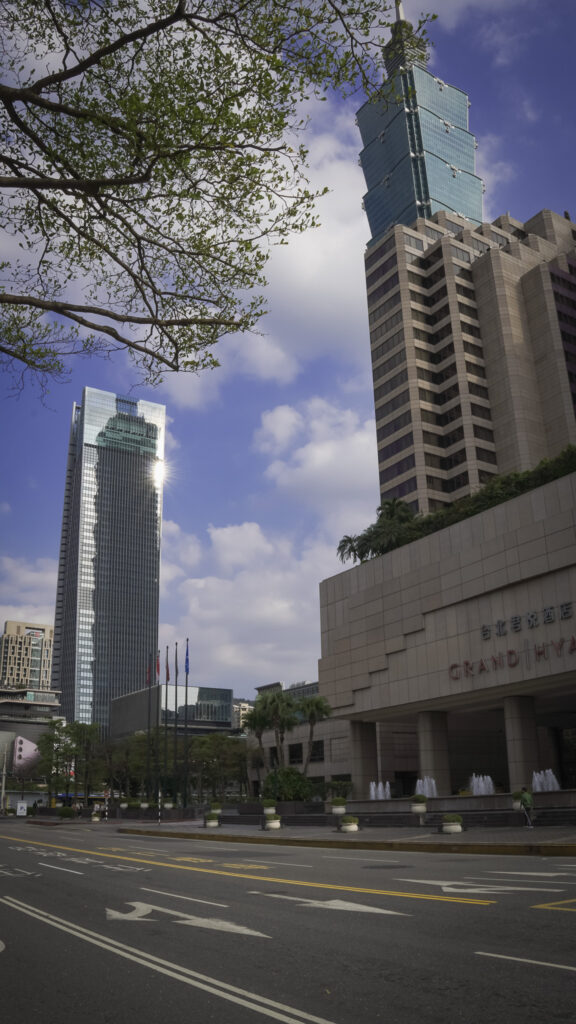Visiting Taipei was a decision based mostly on proximity. We were leaving Cambodia and heading towards South Korea and Japan. Sophie saw Taiwan on the map and we thought, why not? Let’s check it out! It turned out to be an incredible experience. The city had so much going on from large markets with amazing street food, various different neighborhoods to explore, absolutely incredible temples, imposing new architecture as well as really impressive adaptive reuse projects and there’s something about cities that have a large river running through them that just adds that extra touch of beauty. Prague, Paris, Bangkok, London, Warsaw, Budapest, Kyoto, Venice…you get my point. I went for a run along the Tamsui River at sunset and was surprised at all the wildlife in such a big city. Many birds could be seen fishing and hanging out and I was surprised to see so many flying fish heading up the river. Not that I had any reason to be surprised but seeing a fish jumping out of the water and staying there a while is always cool! If you’re interested here’s a webpage with a little more info on the fish. There were sports courts, work out stations and pop up food trucks all along the river and so many people both young and old were out enjoying the sunset. I turned off the trail, ran up some stairs that took me over a road and under a freeway and then ran down 6 or 7 blocks towards our hotel. Around the hotel everything changed. Four lane roads, lots of traffic, both cars and pedestrians and the whole city seemed to be lit up like a Christmas tree. Billboards, signs and building lights shining brightly and looking like something out of Tron. Around our hotel was one of the biggest night markets known as the Ximending or Shi-men Ting night Market. This market had permanent and stylish lighting fixtures creating a walkway and was pedestrian only. There were countless food stalls of fried seafood, steamed dumplings and all sorts of other stuff. Sophie read a blog about a tripe soup place called Ay-chung Flour-rice noodle so we went to try it. We sat there on little plastic stools similar to Vietnam and enjoyed the experience watching the many people pass through the market.





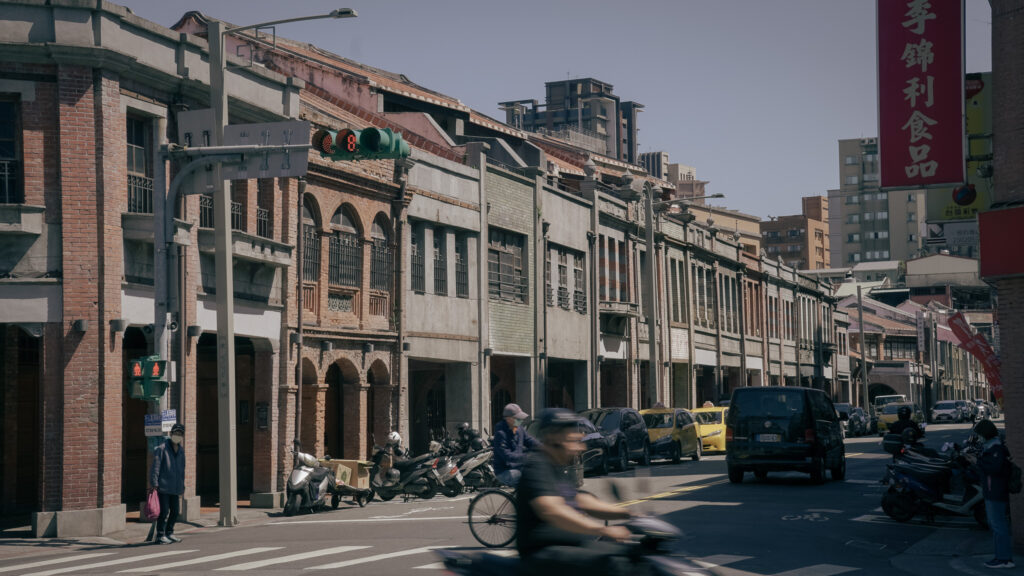
I was really impressed with a city of nearly 2.7 million people to be so clean and organized. Their transportation was impeccably clean and orderly, people waiting in neat lines to get on and off of trains, lining up in single file to take the escalator out of the subway. You won’t see anyone j-walking, they would always wait patiently at the cross walk even on a street without traffic. Part of me, the unruly part, fought against this conformity and rule following. There aren’t any cars, why wouldn’t I cross? At the same time I enjoyed the cleanliness and feeling of safety that this city provided. Arriving for the first time at night we were able to find our way to the hotel by train and by foot comfortably and easily. I think about major cities back home like Los Angeles or San Francisco and I can’t say that I’ve felt as comfortable walking around in the dark.
We were amazed at their traditions and preservation of their architectural history. There were some impressive adaptive reuse projects that were now trendy places to eat and shop such as the Red House, Bopiliao Historical Block and the Huashan 1914 Creative Park. One place in particular that really impressed me was the Lin An Tai Historic House. It was initially built in 1754 but the city needed to move it to make way for growth. They painstakingly deconstructed the building and then reconstructed it creating both a park and museum. There were families with children playing, people sitting in silence and meditating, young people dressing up in traditional outfits and taking pictures and people like us just wandering a fantastic example of 19th century Taiwanese architecture. I could have stayed there all day but the sounds of the Confucian Temple were calling and that too was an incredible experience.







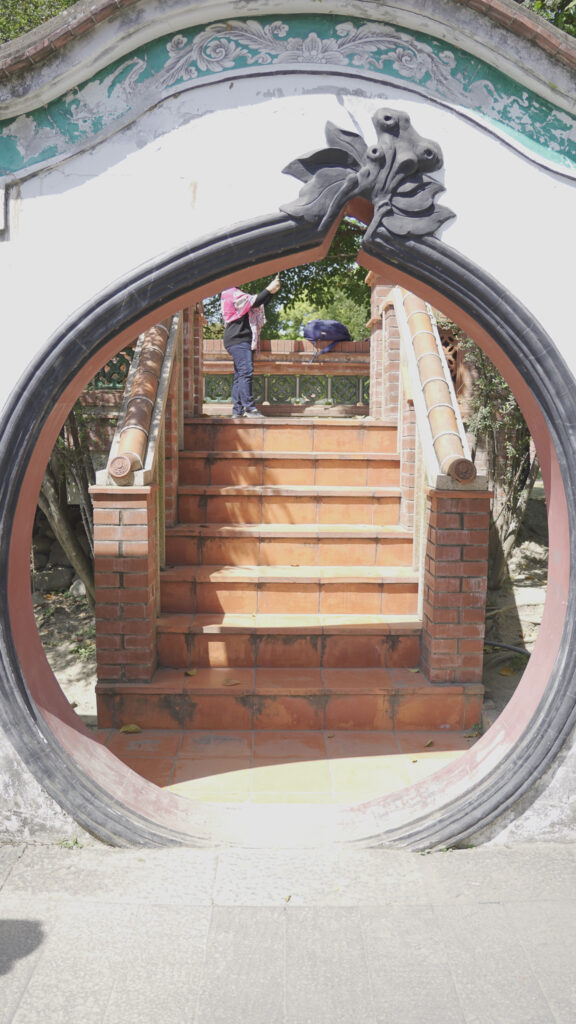
As we passed through the gates there was a group of ten people playing and singing traditional music. A few stringed instruments, a flute and a lady singing in a reserved and calculated manner. It’s hard to describe so I’ll upload a short video and you can hear for yourself. This temple is dedicated to Confucious and each room surrounding the central courtyard was filled with exhibits on his life and teachings. He was a strong believer in self-cultivation. Part of his teaching was for people to master many skills and be well rounded individuals. There were exhibits on the Chinese characters and development of the written language. In Taiwan writing is not just a tool of communication but truly an art form. There are people that spend their lives mastering the craft of writing. At the temple there was a gentleman there practicing his writing skills and was giving away free samples for the visitors which was a nice keepsake for us. We saw other forms of art, music, puppetry, mathematics, geometry; it reminded me of ancient philosophers in Europe before science became so specialized.



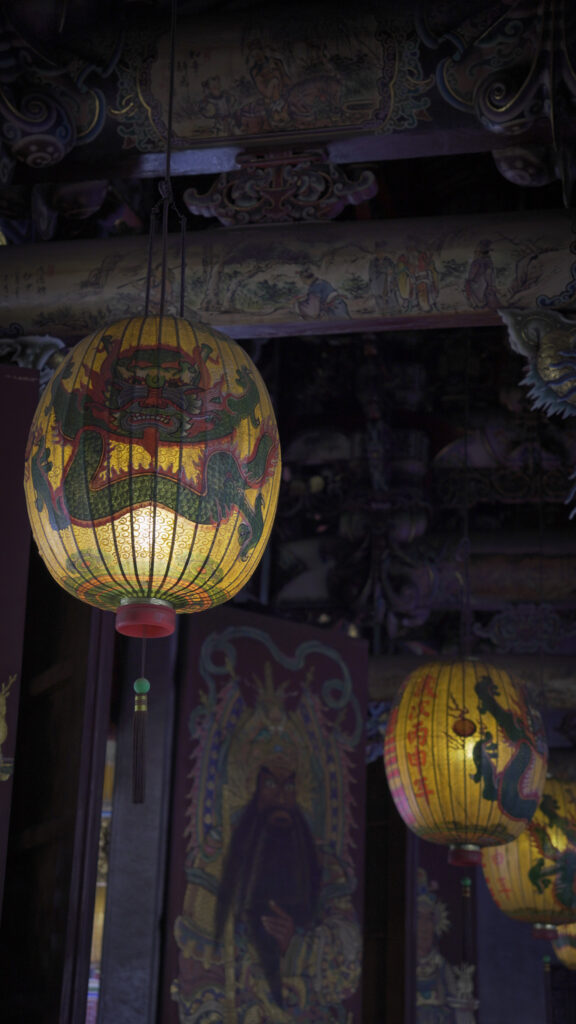


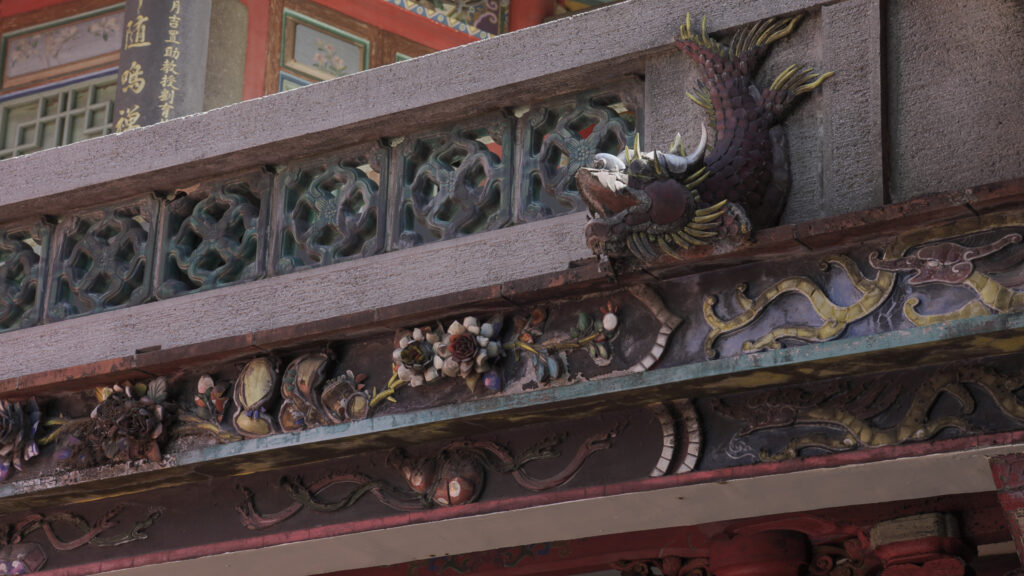


All of their temples were exquisitely constructed, carved wood and stone, hammered metal and bright, beautiful paintings. In this country everything has meaning, symbolism is everywhere and as you begin to recognize the markers it increases your appreciation and fondness for a place. We went into several temples with people chanting and worshiping in unison. The smell of incense filled the place but since these are outdoor temples it didn’t smell as strong as the medieval catholic churches of europe. I really enjoyed the layout of these temple complexes. They would often have an enormous, ornately decorated front gate separating the worldly from the holy. Inside there would be one or sometimes multiple main shrines for worshiping surrounded by many rooms and covered walkways. The flooring was of large slabbed granite while walkways were often of brick or clay tile. The screens, used as doors were intricately carved while the rooflines, rafters and ridgelines were so ornately decorated with carved flora and fauna it was overwhelmingly beautiful. I don’t know the details of their religious beliefs but the sound of their chanting, unlike the prayer calls I’ve heard in Muslim nations, was melodic and lovely to listen to. Sitting on the edge of the central shrine, taking in the sites and sounds of this space was really special and was another eye opening experience in understanding the people of the country. Calm, reserved, relaxed, spiritual, considerate, friendly, welcoming. That is how I would classify the people we encountered.

While we visited the Huashan 1914 park we saw a screening for a famous Taiwanese movie called A City of Sadness which was the story of a family during the post WWII years when Chiang Kai-Shek took power on the island. It was a heavy movie and eye opening to see the despair and torment that people had to go through for so many years. We had, like most young students, learned about this leader in high school but to learn more in the place where it all took place and from the voices of those who experienced it was special. We paid a visit to the Chiang Kai-Shek memorial and spent a few hours learning about his life and legacy. I don’t think I’ve come across such an honest portrayal at any other memorial in the world. There were two sides to the exhibit, one which showed all the good that he did for the country and the people and the other brutal inhumane side that his regime inflicted on the population as well. If you’re planning a trip to Taipei this is definitely worth a visit and much bigger than we realized. We were there for about 2 hours and it wasn’t enough time. One thing that struck me as we visited this museum as well as other parts of Asia was the recent suffering that has gone on. No society on earth has not had to endure struggle and oppression and it was powerful to see the stories of the people that fought for independence, even burning themselves in streets and government buildings in protest as recent as the late 1980’s.













The more we have traveled the more I’ve come to appreciate nature within our daily lives. I love when big cities create a green refuge for their citizens allowing them to get out of the concrete fast paced nature of their centers. The city is very dense however most of the buildings we encountered were an approachable size, between 3 and 5 stories and the roads were relatively wide making for an enjoyable city experience. Nevertheless, the natural environment surrounding this city is stunning and they’ve made it incredibly easy to access. Taipei is situated in a relatively flat river basin surrounded on almost sides by large hills which have been created by three major fault lines. Within about an hour you can hop on the subway out towards the zoo and then take the Maokong gondola over 4km into these hills. It feels like in no time you can put the city skyline way out onto the horizon while you sip a cup of tea from one of the many hillside cafes. When we got out to the end of the line there were many walking trails both dirt and paved as well as small shops and cafes to enjoy the fresh air. We walked around for a while and then sat on a terrace and had green tea with a view of the bamboo looking shaft of the Taipei 101 building.
